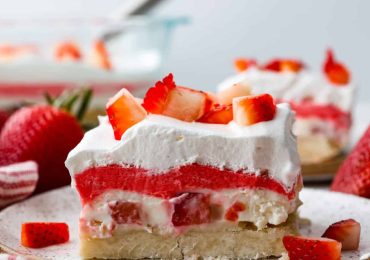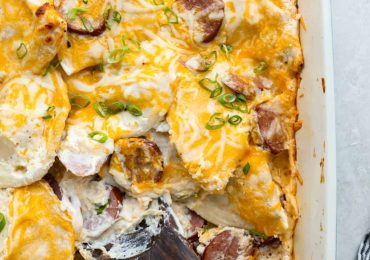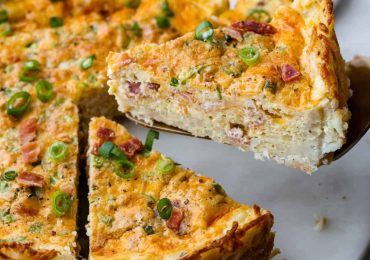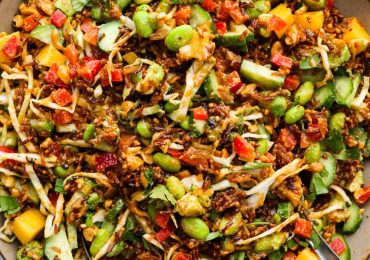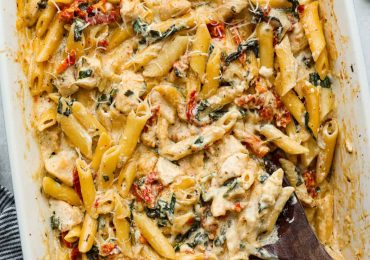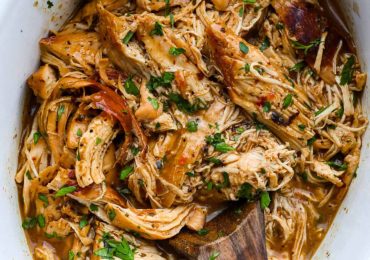This website may contain affiliate links and advertising so that we can provide recipes to you. Read my disclosure policy.
French buttercream is a luxurious frosting made with egg yolks as the base and simple syrup for sweetness. This gives the frosting a smooth custard-like texture. This frosting is great for piping because it holds its shape well!
For most recipes, you can use French buttercream in place of American buttercream. You could try French buttercream with my white, Lemon blueberry, or lavender cupcakes.
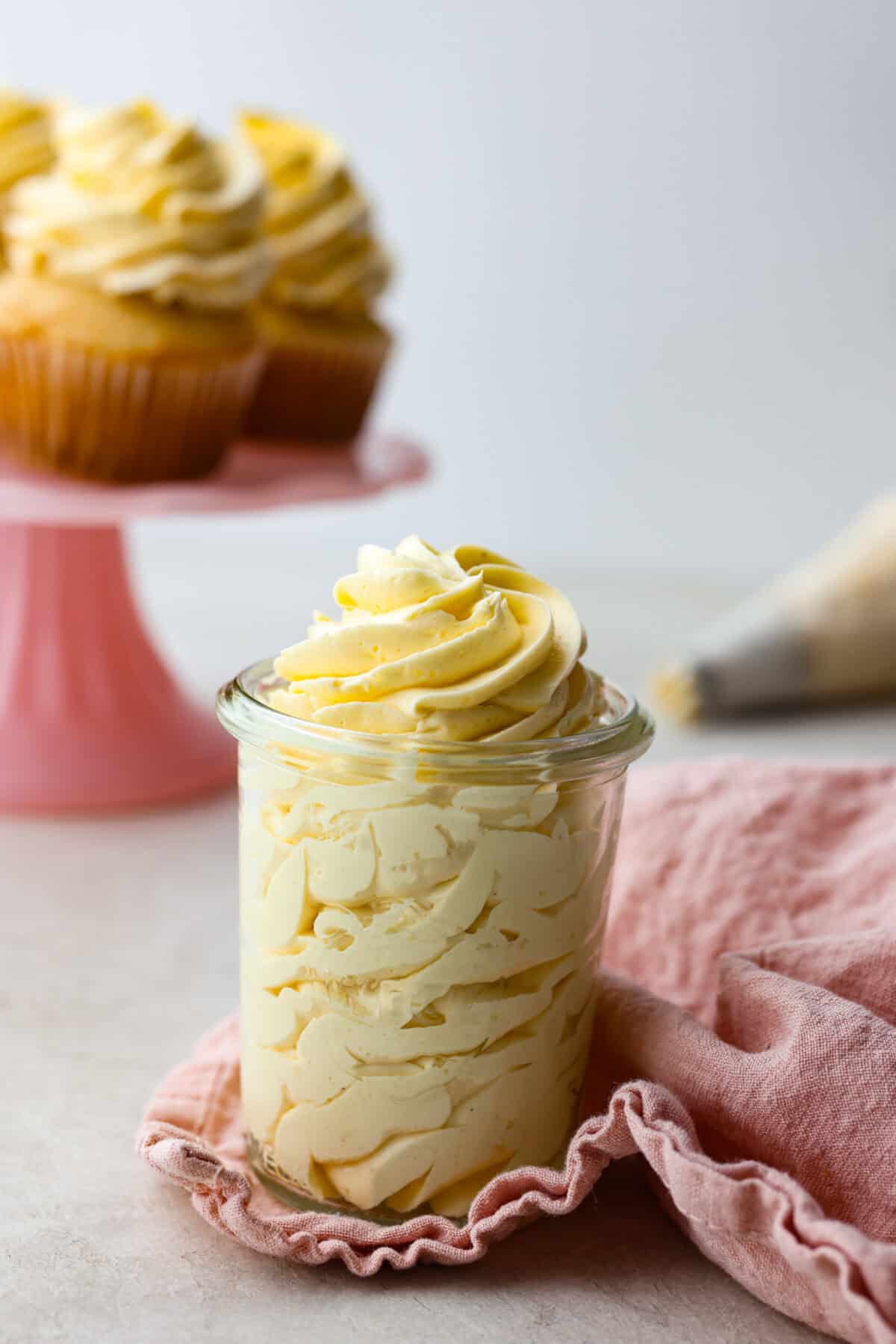
Reasons You’ll Love This Recipe
- Texture: French buttercream is incredibly smooth and creamy. The use of egg yolk gives it a custard like texture.
- Flavor: French buttercream is less sweet than American buttercream, which uses powdered sugar. It is also a great base for added flavors.
- Elegance: When you use French buttercream, you will wow all of your guests!
What is French Buttercream?
French buttercream is a rich and creamy frosting made with egg yolks. The egg yolk base lends to its decadent texture and yellow color. Unlike American buttercream, which uses powdered sugar for texture and sweetness, French buttercream uses cooked sugar syrup.
What Ingredients Do I Need to Make French Buttercream?
Take your dessert game to the next level with this silky-smooth French buttercream! Using just a few simple ingredients, you can create a fancy, gourmet twist on the classic buttercream. For exact measurements, scroll to the recipe card at the bottom of the post.
- Egg yolks: Egg yolks stabilize the frosting. They also add a rich, creamy, custard-like flavor.
- Granulated Sugar: When cooked into a syrup, sugar helps emulsify the butter, so it blends perfectly with the egg yolk, creating a rich texture.
- Water: Used with sugar to cook into syrup.
- Unsalted Butter: Adds depth of flavor and stability to keep its shape.
- Salt: Enhances all of the flavors and perfectly balances the sweetness.
- Vanilla Extract: Provides a warm, inviting flavor. You can substitute for different flavors and extracts.
What Are the Different Types of Buttercream?
There is another world of buttercream outside of the simple American buttercream recipe that combines butter and powdered sugar. Check out the list below to see what sets them all apart from one another.
- Swiss Meringue Buttercream uses egg whites mixed with sugar to create a meringue, then combined with butter. The texture resembles French buttercream, but the flavor is less rich.
- Italian Meringue Buttercream is similar to Swiss buttercream. The difference is you cook the sugar into a syrup and then combine it with the egg whites. It is the most difficult to make but turns out silky smooth with just the right amount of sweetness.
- German Buttercream uses pastry cream mixed with butter as a base. Its flavor is divine, and its texture is smooth and more custard-like.
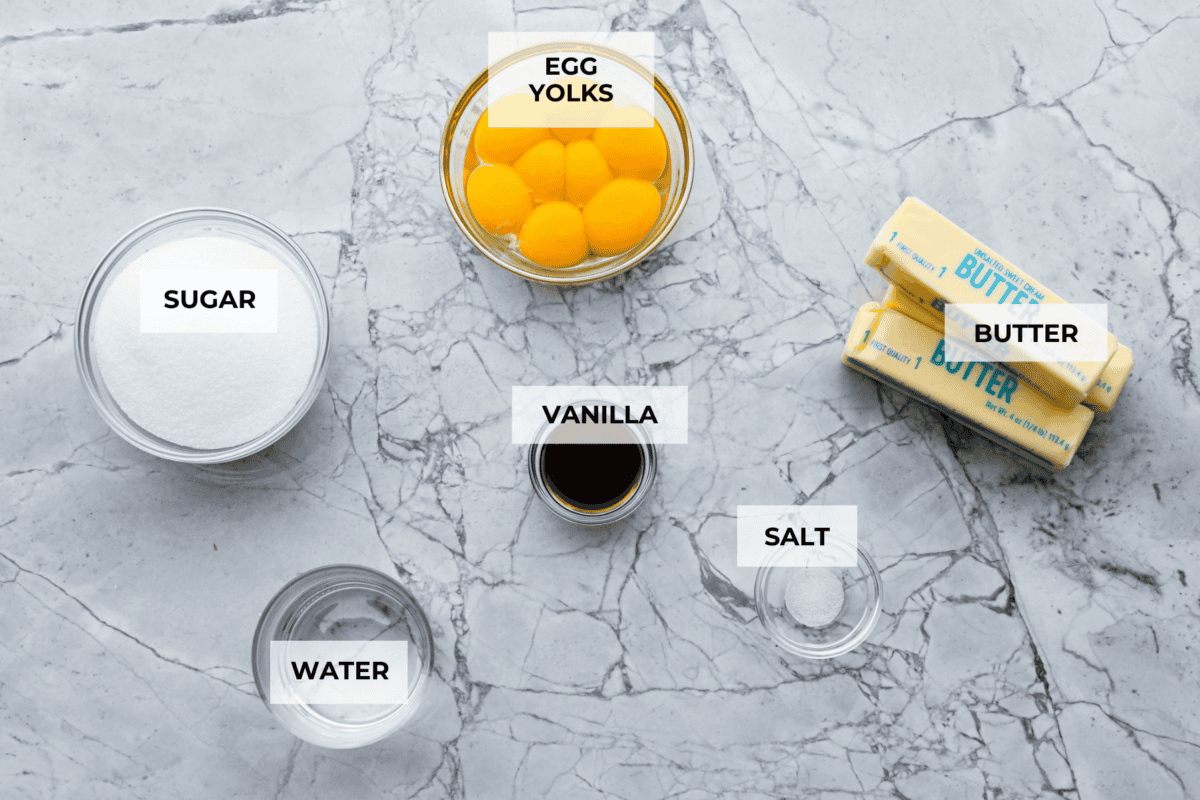
Steps to Make French Buttercream
Follow these instructions step by step to ensure your buttercream turns out perfect. There is also a tips section below that you can reference if you have any questions!
Sugar Syrup
- Boil Sugar & Water: Add the sugar and water to a small saucepan or skillet and heat over medium-low heat until boiling.
- Reduce Heat: Reduce the heat and continue to cook the sugar while you prepare the eggs.
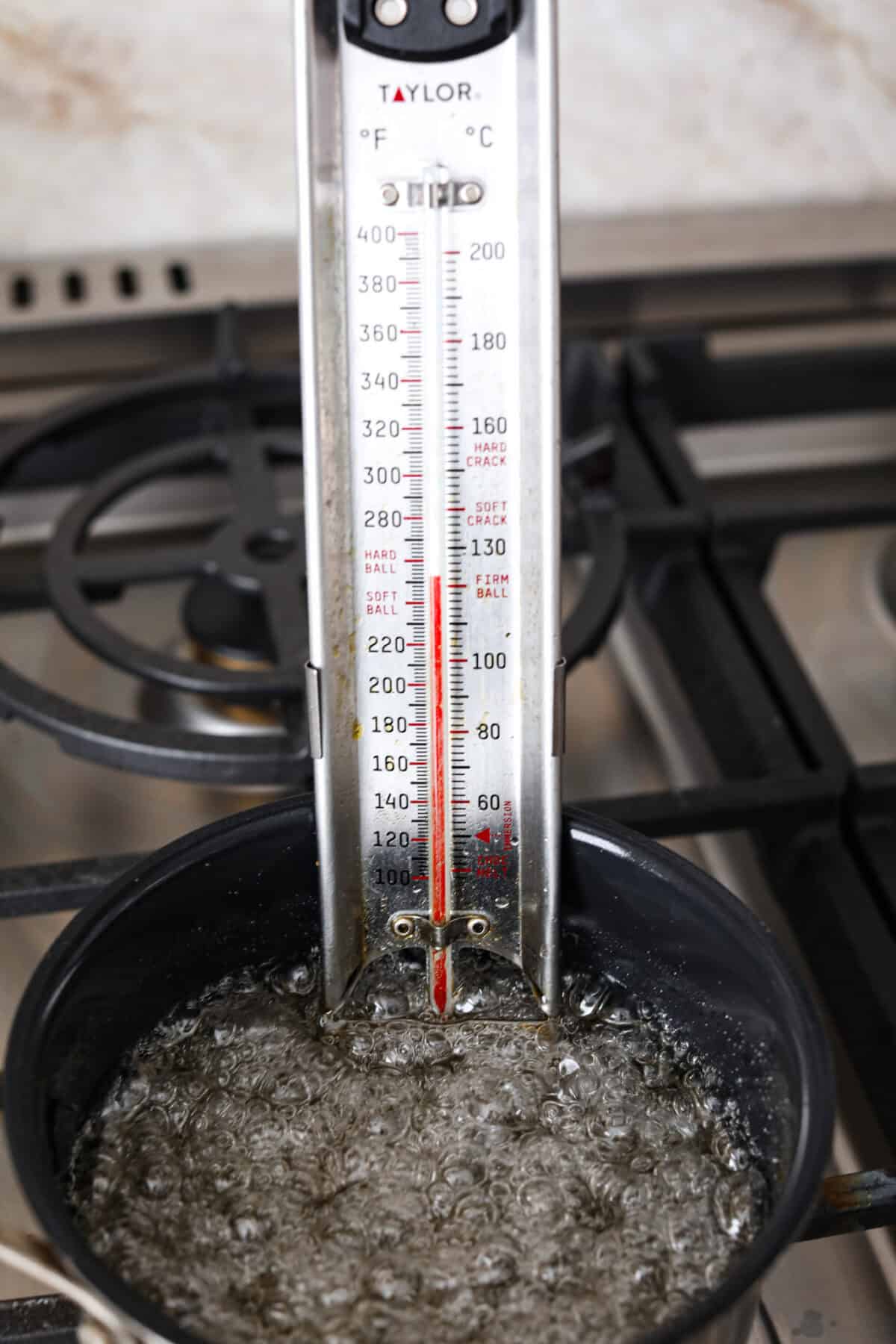
Make the Whipped Cream
- Whip Egg Yolks: Pour the egg yolks into the bowl of a stand mixer. Whip at medium-high speed with the whisk attachment until the yolks are thick and foamy.
- DO NOT overheat the sugar: I recommend using a candy thermometer to know when the sugar reaches 240 degrees Fahrenheit. Once it has, you can remove the pan from the heat and turn the mixer on to low speed. Slowly and carefully drizzle the hot sugar syrup in a steady stream into the egg yolks as they whip.
- Whip Sugar & Egg Yolks: Once all the sugar has been incorporated into the eggs, continue to whip at medium speed until the bowl feels cool to the touch.
- Add Butter: Add the butter one tablespoon at a time. Allow the eggs to absorb each tablespoon before you add the next.
- Vanilla: Add the vanilla extract and a pinch of salt. Continue to whip on medium speed until the buttercream is smooth and glossy.
Tips for French Buttercream
Make sure you follow these helpful tips to ensure your buttercream turns out just right!
- DON’T overcook the sugar: Do not cook the sugar beyond 240 degrees Fahrenheit! Overcooking causes the sugar to harden when it touches the cooler egg yolks, stopping the yolks from absorbing it.
- Test sugar doneness: Sugar syrup must be at the soft ball stage. You can test your sugar syrup without a thermometer by dropping a small spoonful into a glass of cold water. If it dissolves, it’s not ready yet. If it hardens, it is overcooked. It is ready if the syrup forms a soft ball, can be squished between your fingers, and remains sticky.
- Low Speed: To avoid flinging hot syrup, keep your mixer on low when pouring the syrup into the eggs.
- Butter: The butter should be soft enough to leave an indent with your finger but NOT squish your finger through. Using the incorrect temperature can cause your buttercream to curdle.
- Refrigerate: If the buttercream isn’t cooling down after adding the sugar syrup, place the bowl in the fridge for a few minutes, then whip it again.
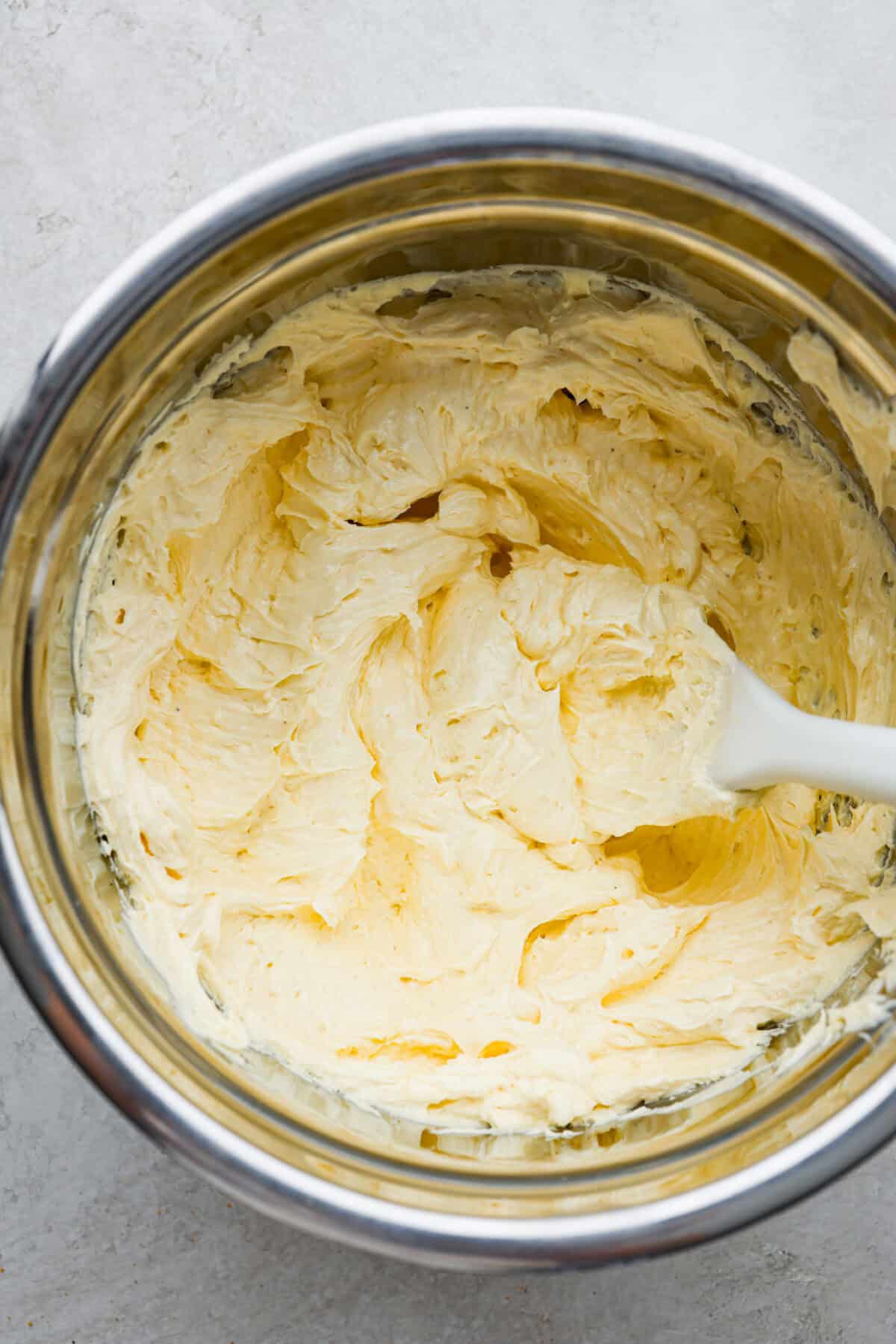
French Buttercream Storing Instructions
If you are lucky enough to have some leftover French buttercream, here is how to store it properly.
- In the Refrigerator: Since this buttercream tends to get soft and melt, keep it at room temperature for only a few hours. Store it in an airtight container in the refrigerator for up to 7 days.
- In the Freezer: French buttercream stays fresh for up to 3 months in the freezer.Leave it in the refrigerator overnight to thaw completely before softening it and whipping it before use.
Re-fluff instructions: To re-fluff chilled buttercream, let it sit at room temperature for an hour, then whip. You can also half-melt it in a double boiler before whipping.
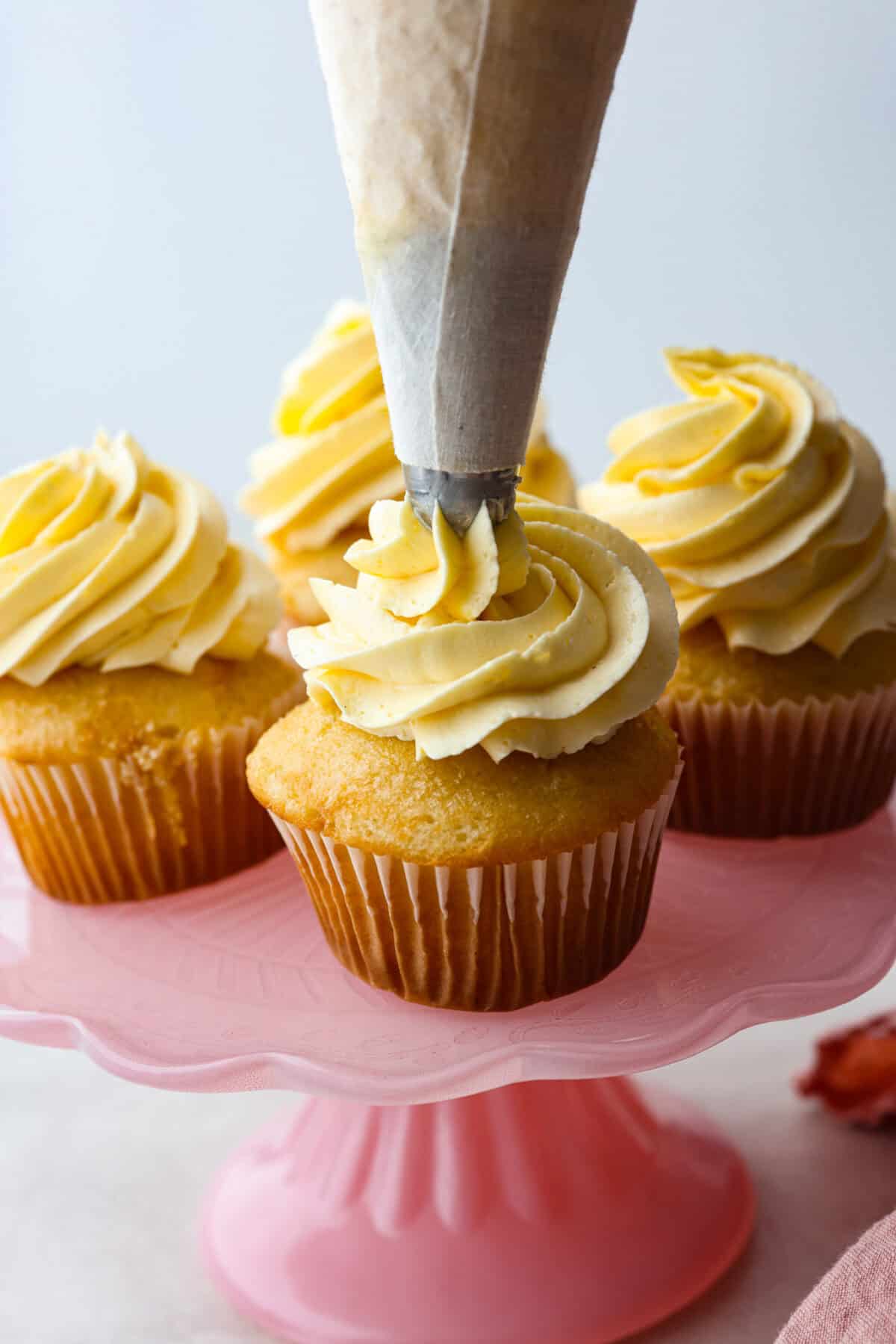
More Fun Frosting Variations to Try
This French buttercream will impress your guests with its taste and texture! It’s a must-have in your frosting collection. If you want to try something new and expand your frosting skills, here are some frosting options to explore.
Pin this now to find it later
Pin It
-
Add the sugar and water to a small saucepan or skillet and heat over medium-low heat until boiling. Reduce the heat and cook the sugar while preparing the eggs.
-
Add the egg yolks to the bowl of a stand mixer and whip medium-high with the whisk attachment until the yolks are thick and foamy.
-
When the sugar reaches 240 degrees Fahrenheit, remove the pan from the heat and turn the mixer on low speed. Slowly and carefully drizzle the sugar syrup into the egg yolks as they whip.
-
Once all the sugar has been incorporated into the eggs, continue to whip at medium speed until the bowl feels cool to the touch.
-
Add the butter one tablespoon at a time, waiting for each tablespoon to be absorbed into the eggs before adding the next.
-
Add the vanilla extract and a pinch of salt. Continue to whip on medium speed until the buttercream is smooth and glossy.
Calories: 1361kcalCarbohydrates: 102gProtein: 9gFat: 105gSaturated Fat: 63gPolyunsaturated Fat: 5gMonounsaturated Fat: 29gTrans Fat: 4gCholesterol: 762mgSodium: 52mgPotassium: 86mgSugar: 100gVitamin A: 3529IUCalcium: 92mgIron: 1mg
Nutrition information is automatically calculated, so should only be used as an approximation.

